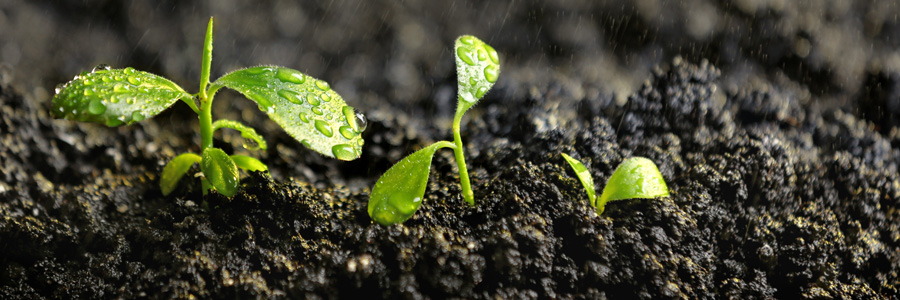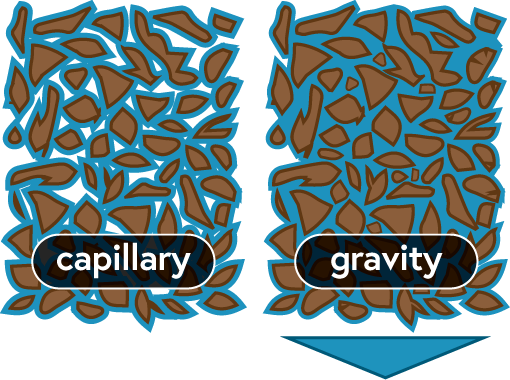
Imagine you’ve just spilled a glass of water on your counter. You quickly grab a paper towel and toss it over the puddle of liquid. Have you noticed how when you do this, the liquid defies gravity and creeps upwards and outwards across the paper towel? This is because of hydraulic conductivity, which is the process of how water is transported through porous materials, like soil.
When you water anything — whether it be a lawn, a house plant, or a tree — the water moves through the soil in one of two patterns: capillary or gravity. These two patterns impact how much water the roots of the greenery absorb, versus how much water runs off and is wasted.
Capillary Soil Water Transport
Capillary movement usually occurs in dry soil and is when water moves in all directions through the empty capillaries (or pores) of the soil. This evenly distributes moisture throughout the soil and makes water available to the plant’s roots.
Do you have a house plant you haven’t watered in a few weeks? When you water that dry soil again, the water will seep into the soil and be soaked up by the plant’s roots. None should leak out of the hole at the bottom of the pot. This is capillary movement.

Gravity Soil Water Transport
Gravity movement usually occurs in saturated (wet) soil and is the downward movement of water straight through the soil. When this happens, the water leaches past the plant roots and isn’t available to them. This leads to runoff. The water isn’t being used by the plant — it’s being wasted.
Imagine that same house plant that was dried out and has now been sufficiently watered. If you keep watering it, the water will flow right through the pot and start dripping out of the hole at the bottom.
So, What Does this Mean for Irrigation?
The way water is transported through soil impacts how and when you should irrigate your landscaping. A three cycle strategy is a smart tactic that ensures your plant’s roots are getting just enough — and not too much — water.
The three cycle strategy means applying water in soak cycles so that it has a chance to absorb, reducing runoff and wasted water.
How the Three Cycle Strategy Functions
- The first cycle breaks soil surface tension and prepares the soil to absorb water
- The second cycle accelerates capillary movement within the soil
- The third cycle will drive the moisture deeper into the soil (gravity movement) once the root zone has been saturated with water
Understanding soil water transport is crucial to making smart irrigation decisions. Knowing how much or how little water your landscape needs won’t just save your plants — it will save you money, water, and time. Baseline’s soil moisture sensors communicate with smart irrigation controllers to give you real-time readings of moisture level in the soil to manage your water use objectives. Check out our webinar for a further deep dive into soil water transport theory and learn more here about how Baseline can save you up to 62 percent of the water used in traditional irrigation scheduling.

